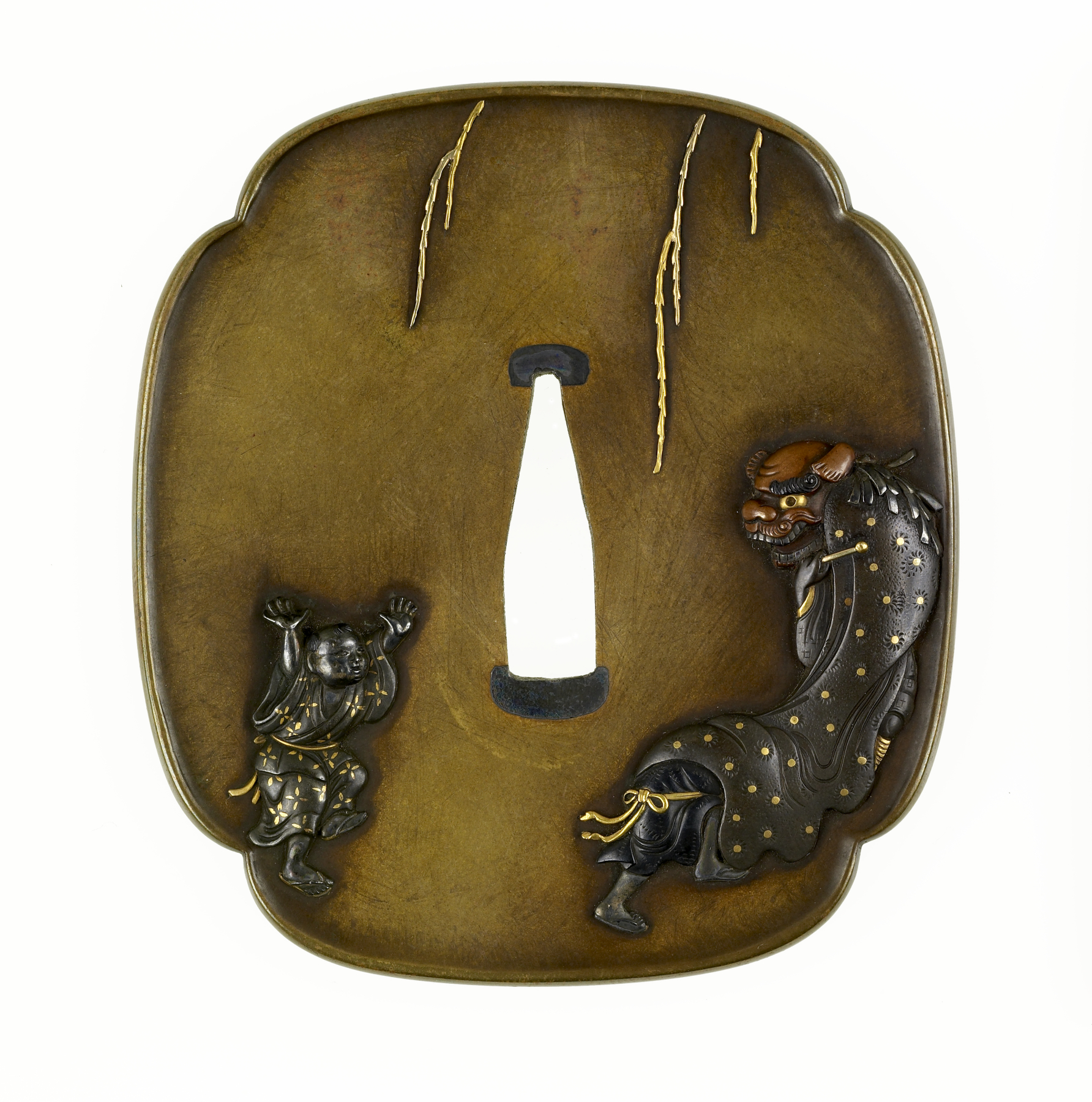Tsuba with Lion Dancers
(Japanese Military Armor)
The lion dance is usually performed as part of the New Year's celebrations. On this tsuba, two performers dance in the lion costume, along with a third masked figure who is also part of the dance. The lion dance tradition developed in China from a belief that the dance would protect villages from evil spirits. Stylized lions such as this are known as Chinese lions (shishi) in Japan. A willow tree decorates the back and its boughs also appear in the upper portion of the front side. The tsuba is signed with a seal on the reverse.
Inscription
Provenance
Provenance (from the French provenir, 'to come from/forth') is the chronology of the ownership, custody, or location of a historical object. Learn more about provenance at the Walters.
Henry Walters, Baltimore [date and mode of acquisition unknown]; Walters Art Museum, 1931, by beqeust.
Geographies
Japan, Tokyo (Edo) (Place of Origin)
Measurements
3 1/16 x 2 3/4 x 3/16 in. (7.7 x 7.03 x 0.42 cm)
Credit Line
Acquired by Henry Walters
Location in Museum
Not on view
Accession Number
In libraries, galleries, museums, and archives, an accession number is a unique identifier assigned to each object in the collection.
In libraries, galleries, museums, and archives, an accession number is a unique identifier assigned to each object in the collection.
51.105




